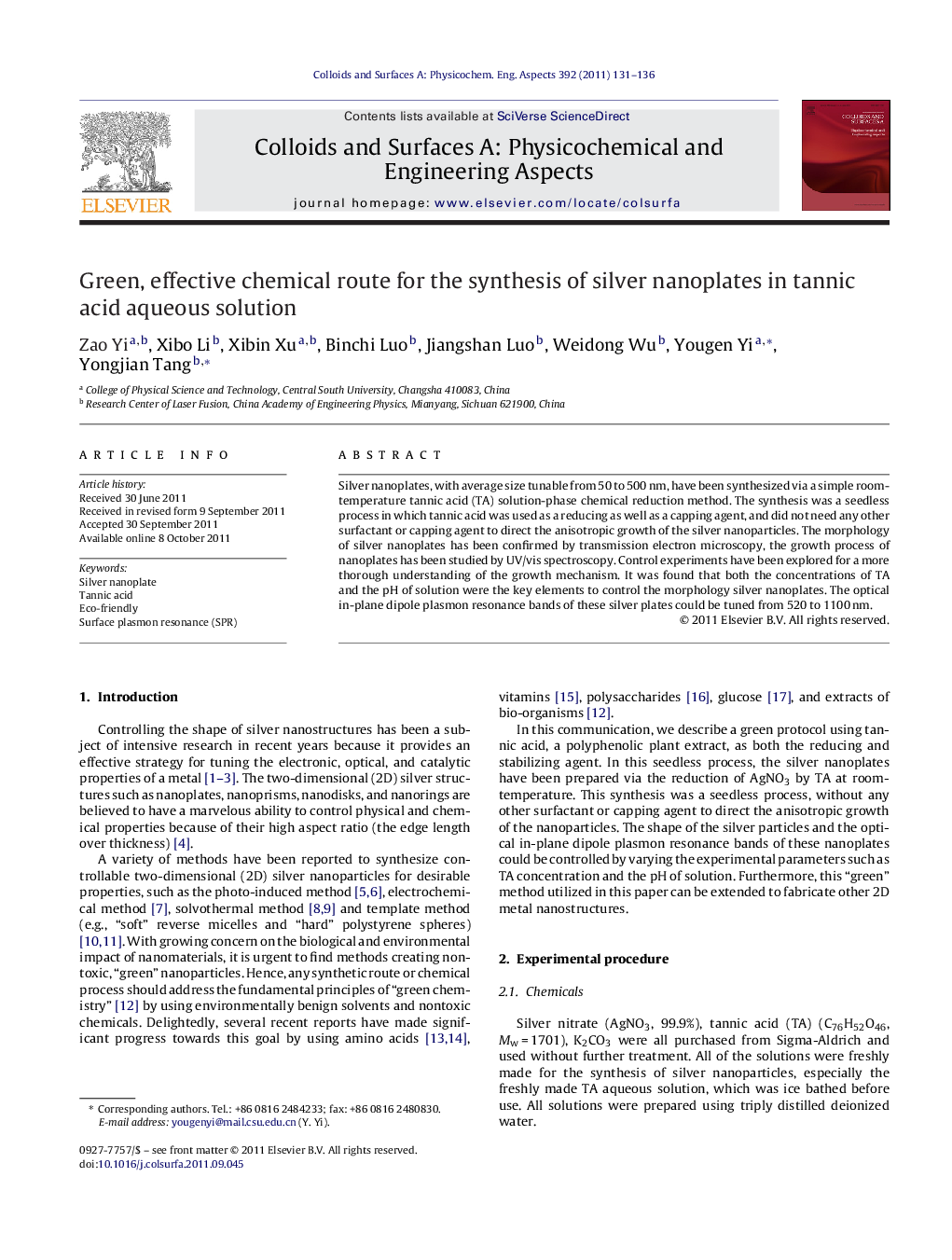| Article ID | Journal | Published Year | Pages | File Type |
|---|---|---|---|---|
| 594384 | Colloids and Surfaces A: Physicochemical and Engineering Aspects | 2011 | 6 Pages |
Silver nanoplates, with average size tunable from 50 to 500 nm, have been synthesized via a simple room-temperature tannic acid (TA) solution-phase chemical reduction method. The synthesis was a seedless process in which tannic acid was used as a reducing as well as a capping agent, and did not need any other surfactant or capping agent to direct the anisotropic growth of the silver nanoparticles. The morphology of silver nanoplates has been confirmed by transmission electron microscopy, the growth process of nanoplates has been studied by UV/vis spectroscopy. Control experiments have been explored for a more thorough understanding of the growth mechanism. It was found that both the concentrations of TA and the pH of solution were the key elements to control the morphology silver nanoplates. The optical in-plane dipole plasmon resonance bands of these silver plates could be tuned from 520 to 1100 nm.
Graphical abstractSilver nanoplates have been synthesized via a simple room-temperature tannin solution-phase chemical reduction method through changing the pH of solution.Figure optionsDownload full-size imageDownload as PowerPoint slideHighlights► Silver nanoplates have been synthesized via a simple room-temperature tannin solution-phase chemical reduction method. ► This synthesis was a seedless process, and did not need any other surfactant or capping agent. ► The concentrations of tannin and the pH of solution was the key to controlling the silver nanoplates. ► The optical in-plane dipole plasmon resonance bands of these silver plates could be tuned from 520 to 1100 nm.
